Here-And-Now, Short-Term, Instant-Gratification Coping Skills
This list of skills originally appeared in Coping Skills and is also featured in Unfuck Your Stress, out in paperback October 2023.
The more coping skills you have in your back pocket, the better. If you have an array of stuff to draw from, you are far less likely to fall apart. Consider it a toolbox. You may have a really fantastic screwdriver. Passed down for generations. Your grandpa used it to fix the bathtub 60 years ago. That’s all well and good, except maybe it’s a flat head and today is the day you need a Phillips head. My suggestion? Try any of the following skills that sound vaguely interesting, useful, or intriguing. There is nothing wrong with having a huge, rolling cart of tools on hand at all times. And these are the types of skills that you can use in the moment when you are about to lose your shit.
- Chew on something. Gum. Beef jerky. Pop Rocks. Something that you can focus your attention on.
- Find something to keep your hands busy. Stuff like Play-Doh or Silly Putty is less distracting than fidget spinners, Slinkys, fidget cubes, etc. But dude, use whatever works for ya.
- Blink. It interrupts the brain’s perception of time (according to research, it may function as a way of slowing down our neural metabolism). It’s essentially a system reboot/mini-nap that we do throughout our waking hours unconsciously and that we can also do consciously when stressed.
- Attach a specific scent to feeling calm, happy, and relaxed (lavender can be a good one to use since it has calming properties in its own right). You do this by intentionally smelling a certain scent when you feel safe and relaxed. Like after meditation or guided imagery or exercising. Then carry a drop of that scent on a cotton ball in a ziplock baggie or small container. When feeling stressed, open it and inhale the scent and reconnect to the calm feeling.
- When you find yourself thinking in negative terms of “I can’ts” (such as “I can’t deal with large crowds” or “I can’t run a 10K”) add the word “ . . . yet” to the end of the thought. That opens you up to the possibility of working towards being able to do it later, rather than getting stuck in a cycle of negativity.
- Take a hot bath with Epsom salts for a detox. If you don’t have access to a tub, at least soak your feet.
- Go ahead and cry. Sad tears release chemicals that other tears do not.
- Create a list, either in your head or written down, of five things you are grateful for. (My mom made me do this when I was little and I hated her for it . . . but it so worked.)
- Take off your shoes and socks and connect to the ground beneath you. (It’s called “earthing”—the idea is connecting to the earth more than your own body, which is grounding.)
- Hold a piece of ice in your hand. It won’t actually hurt you, but the sensation will disrupt the other distress signals in your body. This is an especially good coping skill if you struggle with thoughts of self-injury.
- Count backwards from 100 by threes. Trust me, you won’t be able to focus on anything but keeping those numbers organized in your mind.
- Look at cat videos online. Or pygmy goat videos. Or panda bears. Or puppy dogs. Embrace whatever your cuteness kryptonite is for a defined break, like five minutes.
- Identify whatever muscles are tense in your body and intentionally relax them one by one.
- Visualize a stop sign in your head. And tell yourself “STOP.”
- Picture an ideal moment in your life. Put yourself back in that experience and connect to the positive feelings you associate with that time period.
- Blow bubbles. It’s damn impossible to have panic-attack-inducing breathing and control your breath enough to blow a bubble at the same time.
- Get under something heavy. Weighted blankets are great, but whatever blankets you have will also do, so pile them on you. Or crawl between the mattress and the box spring of your bed, if that won’t induce any claustrophobic feelings. As a general rule, you want a weighted blanket to be 10% of your body weight if you are an adult for maximum effect. For kiddos, it’s about 10% of their current body weight plus a pound or two.
- Sit in the sun. Vitamin D helps depression symptoms and reduces systemic inflammation in the body.
- Do some gentle yoga poses (also known as forms, or by their Sanskrit word, asanas). These facilitate body awareness.
- Drink something warm and soothing. Coffee or tea with honey and lemon. Do caffeine-free if caffeine makes you edgy (my personal favorite comfort tea is Good Earth Sweet & Spicy, and it is available with caffeine and without).
- Take a picture of a living thing that you love. Your boo. Your kiddo (human or fur baby). Your bestie. A gorgeous flower. Your own damn rock-star survivor self. Take pictures of all of them. Remind yourself that there is love and beauty living out in the world.
- Create a tiny treats budget and hit the thrift or dollar store. When I was raising my daughter on 18k a year and living off my WIC groceries, one of my favorite treat activities was to buy a dollar bottle of nail polish and give myself a pedi at home. Create a tiny fun budget for yourself. Something in the one-to-five-dollar range maybe? Hit the dollar store or resale shop and treat yourself to something that’s purely for fun. A bubble bath. A cheesy book. A new mug for your Sweet & Spicy tea.
- Write a letter to someone you love or appreciate. Tell them what makes them so special to you. You can send it or not, but sending it might turn out to be the boost THEY need.
- Write a letter to yourself. Your past self, your future self, your current self. Who could use some support and words of wisdom?
- Take one toxic (or suspicious) thing out of your life for 21 days. A food, a substance, a shitty human being. How do you feel? Any better? What happens when you allow it (or them) back in three weeks later? Does your body say no?
- Drink some water. Drink A LOT of water. I don’t wanna see one bit of yellow in that pee, OK? Water is as vital to the brain as it is to the body. It improves our memory and our concentration. You NEED those brain cells well lubricated, am I right?
- Reflect on something you do hella well. How’d you get so good at it? How might those skills translate to this situation?
- Make a list of things that DON’T need to be changed in your life. What works just fucking fine?
- Have sex, cuddle with someone, get a light touch massage, or just think about someone you feel close to. These are all activities that release oxytocin (deep tissue massage decreases cortisol, but light touch massage releases far more oxytocin). Oxytocin is a peptide hormone that facilitates connection and empathy. Interesting thing? While cis women are the people scientists have said have more access to (and therefore more) oxytocin (thanks to childbirth, nursing, and a higher likelihood of being relational in general), cis men are far more sensitive to oxytocin than cis women. We all need it to keep our parasympathetic nervous system online!
- Touch not an option? Nurture relationships in other ways. Send someone a text or email thanking them or telling them how much you appreciate them. Deepening our connection with people has a stronger positive correlation to our health than smoking has to cancer!
- Strike a (power) pose. Tons of research shows that when we stand like superheroes (legs apart, hands on hips) we feel more powerful. Standing like this for two minutes decreases cortisol (the stress hormone) and increases testosterone (our engaged-to-win hormone). Channel your inner Wonder Woman or Black Panther, y’all.
- Take a tech break (and can I just say I initially typed this as “brake,” which is equally appropriate). Set up a schedule for checking your messages and social media rather than being on the obsessive constant tech check. Some people have gone so far as to gray out their phone screens (without the bright colors to entice us, we are far less likely to fall back into the rabbit hole of mindless scrolling).
- Picture someone or something that represents loving-kindness and compassion to you. It could be a person, a spiritual figure, or maybe an aspect of nature that resonates with you. Picture yourself in the presence of this compassion and loving-kindness and feel these things towards yourself. What would you hear? How would these experiences feel to you?
- Try a Tibetan singing bowl. The concentration it takes to make it hum is sort of like blowing bubbles. You have to focus so much on that, you can’t focus on other stuff. (I have a friend with a neurological tremor who can focus in well enough to hold his fingers still with the bowl, and that’s AMAZING. It’s the only time I’ve seen him not shake!)
- Do something slowly. Like, slow way down and be mindful. Or pick a task that requires time and mindful attention (making risotto works, trust me on this one!).
- Plan a dream trip. Is it a vacation or a learning experience? Where will you go? What will you do? Most importantly, what amazing foods will you try? Plan out all the details . . . you’ve now got an amazing goal to work toward!
- Pick an anthem song. Play that shit when you need a pick-me-up. Sing along LOUD. (Mine is “Sunflowers” by the Velvet Janes.)
- Smudge that shit. Seriously, the research shows that burning sage and other herbs kills toxins in the air and improves brain functions. Obvs, burning and producing smoke is better (and that’s what I do at home), but at work I use a sage spray so I don’t set off the smoke detectors in the building (everyone there already has enough to put up with having me around!).
- Set your intention by saying it out loud, not just thinking it. It adds an auditory cue, making it more likely to stick.
- Do 5-7-8 breathing. You are essentially breathing in for five counts, holding for seven, exhaling for eight. The longer exhale engages the parasympathetic response.
- Take a break from your comfort zone. Take a different route, even if just to your mailbox. Chew your food on the other side of your mouth (you have no IDEA how weird that will feel to do intentionally if you are a creature of habit!). Pay attention to how these changes affect you; it gives you something new to focus on.
- Make a list of things you look forward to. If the list seems small, create new things to look forward to, like a cupcake date with yourself at the end of the week. Anticipation produces dopamine before you even get the reward!
- Are you really furious about something? Try the 60-minute “anger package” from Julia Samuel’s book Grief Works. Do 10 minutes of journaling, 20 minutes of running (or some other cardio exercise), 10 minutes of meditating, and 20 minutes of watching or reading something funny.
- Shift your language. Say “I don’t” instead of “I can’t.” Instead of making demands of others, state your preference to them and label it as such. These language shifts add ownership to your experience and decrease the power struggle.
- Make one small but healthy change for 21 days and see how you feel after. Not a huge diet shift, but maybe switch out dairy milk for almond milk. Maybe do five minutes of stretching in the morning before going to work. Maybe switch to half-caff instead of fully caffeinated coffee. Something that can have a huge impact without a ton of extra stress and planning.
- Try a cue-controlled relaxation technique. Just tense and then relax certain muscles in your body at a time, so you can connect and feel the difference. When we are upset, we tense our muscles in certain patterns as part of our fight-flight-freeze response. By connecting back to our bodies, we can start to unpack these patterns so when they occur we know where to focus our relaxation efforts.
- Channel your inner Dr. Phil. Step outside what’s going on mentally for a moment and ask yourself, booming Texas drawl included, “How’s that workin’ for ya?” This isn’t intended as a mechanism of self-shaming for whatever response you are having. Remember, responses aren’t good or bad, they are all adaptive. But this does let you step out of the cycle of response for a minute and judge whether it’s an adaptation that is helping you through the current situation in the healthiest way possible. So you can adjust as need be.
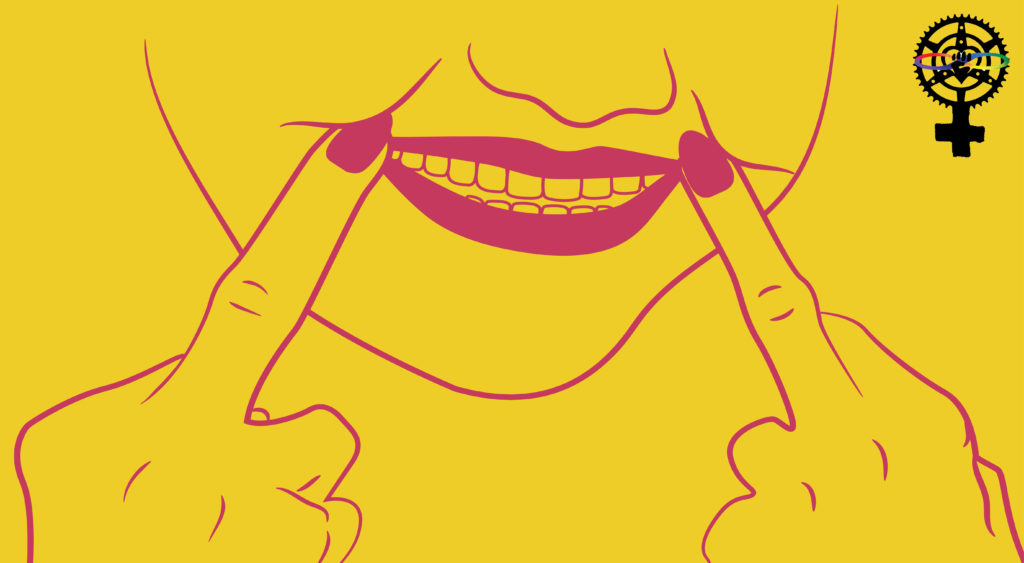
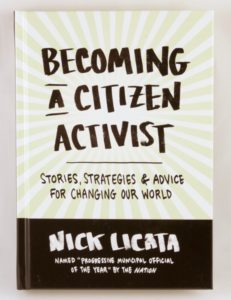
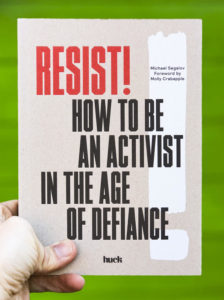
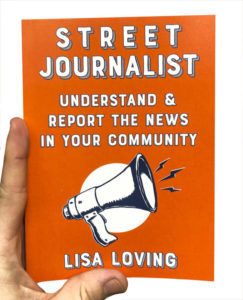
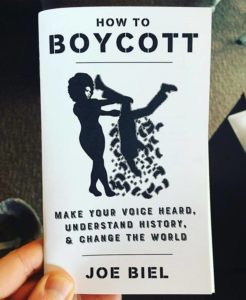

 Remember those book fairs in elementary school? When your sterile school cafeteria or gym was briefly transformed into a book-y wonderland, where you could browse for a whole period and make your careful selections?
Remember those book fairs in elementary school? When your sterile school cafeteria or gym was briefly transformed into a book-y wonderland, where you could browse for a whole period and make your careful selections?